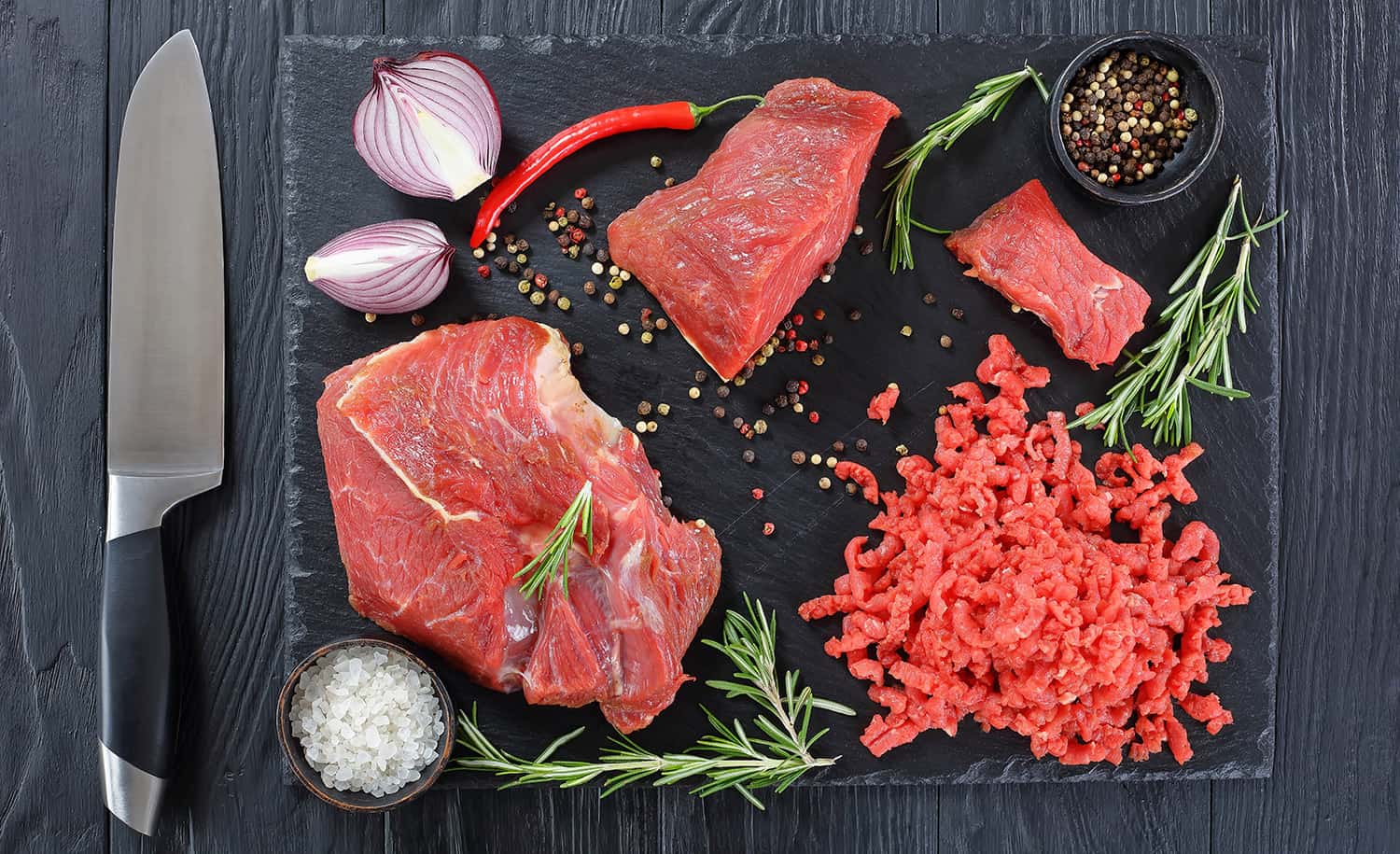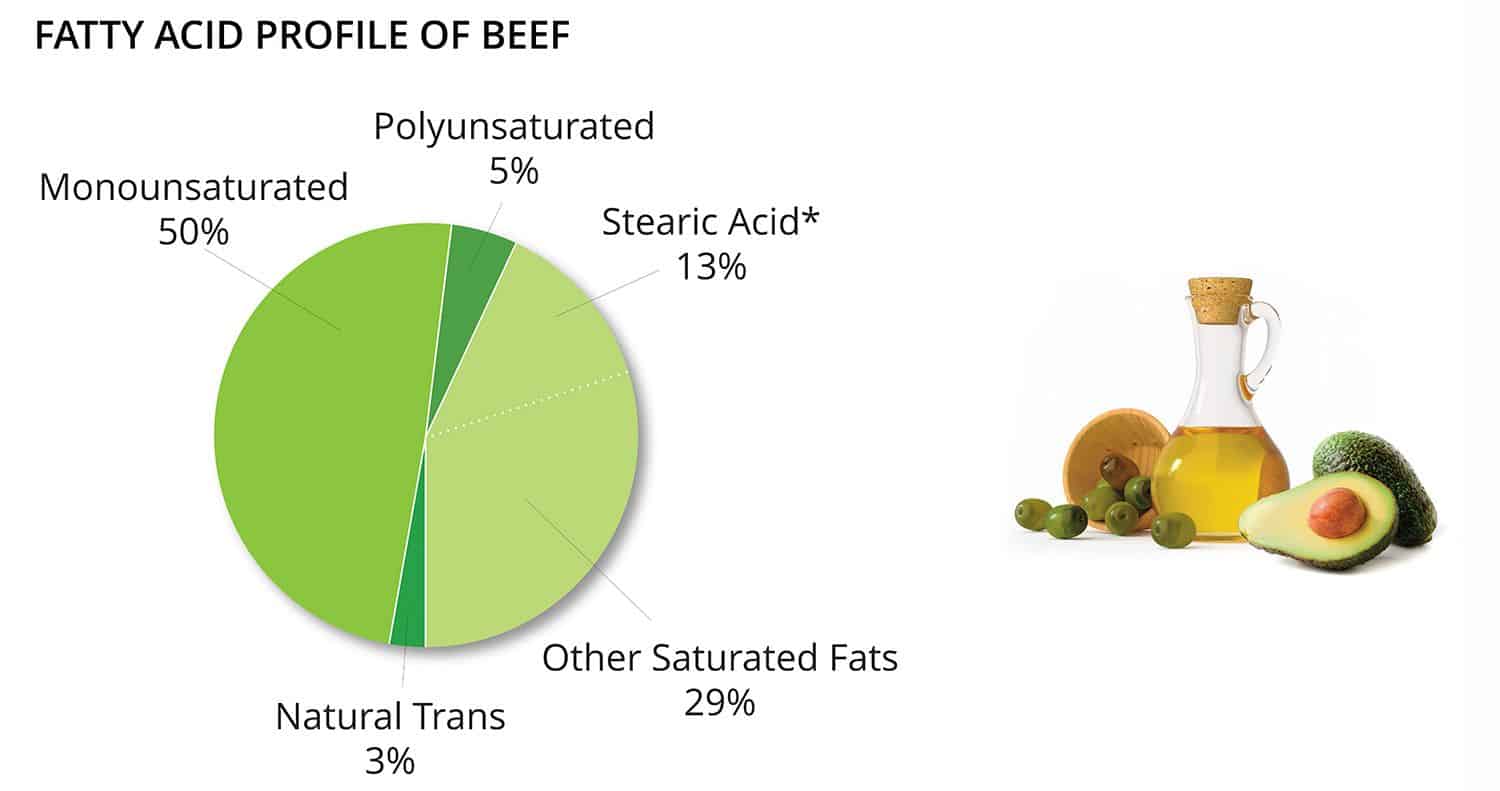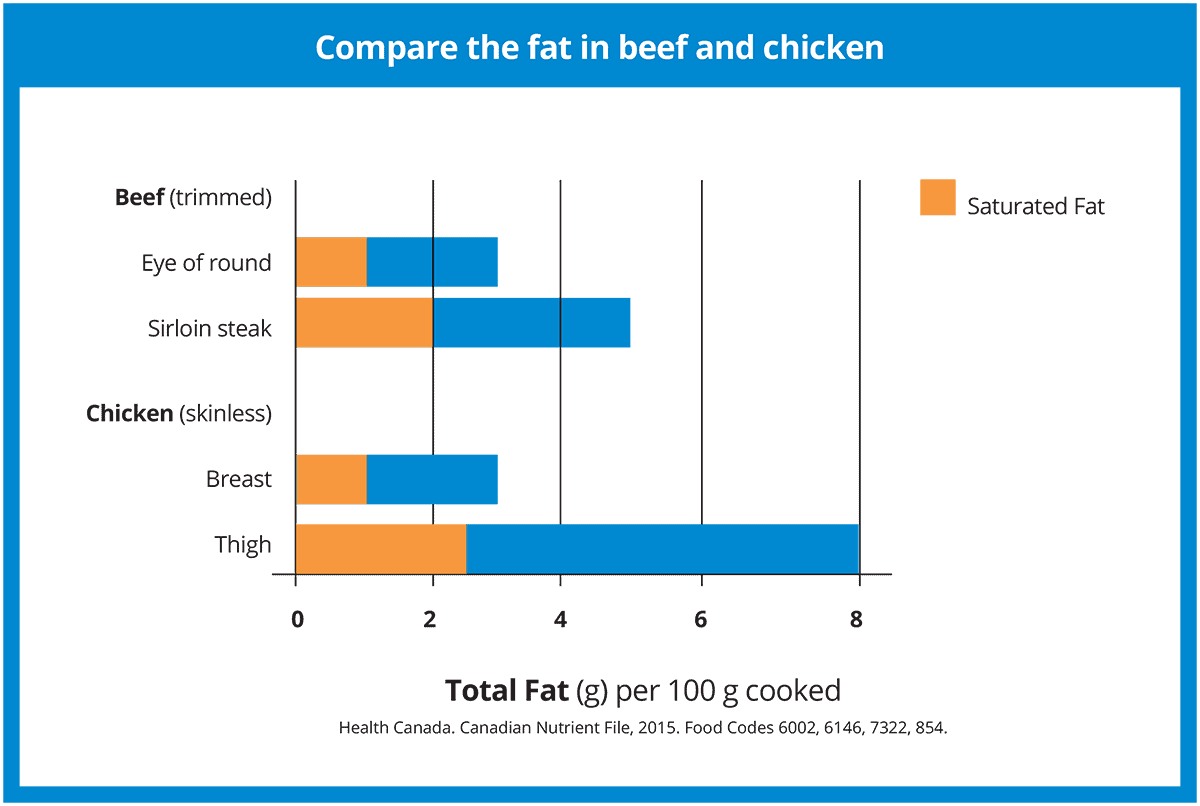Fat
There are some facts about beef and fat that don’t seem to make the headlines. Here are some fast-fat-facts that should be considered when it comes to discussions of beef and health:

There are some facts about beef and fat that don’t seem to make the headlines. Here are some fast-fat-facts that should be considered when it comes to discussions of beef and health:
Beef’s surprising fat profile
Half of the fat in beef is monounsaturated1, the same type of healthy fat found in olive oil and avocados.

Contrary to popular belief, there is actually more unsaturated fat in beef than there is saturated. In fact, almost 60% of the fat found in beef is unsaturated, the type of fat to focus on when striving for a healthy diet.
* Stearic acid is a type of saturated fat that has been shown to have little effect on blood cholesterol levels.2
Saturated Fat is a Natural Part of Many Healthy Foods
Like beef, many foods contain some saturated fat as part of their fat ‘mix’ – even foods we think of as “healthy fats”. For example, 15% of the fat in avocado is saturated; and for salmon it’s 21%!3
These are all healthy, wholesome foods, like beef is, and it demonstrates that foods are complex and more than just the sum of their parts.

Most beef cuts are lean
If you’re concerned about managing your fat intake, one unique property of beef is that much of the fat is visible and can therefore be trimmed prior to eating. In fact, based on the average composite of beef cuts, beef qualifies for the Health Canada claim ‘lean.’ 1
Leanest options? Look for cuts that contain the word ‘round’ or ‘loin’ in their name, or flank. To further lower fat content, trim any visible fat you see, either before or after cooking.
Is ground beef lean?
The definition of the term ‘lean’ is slightly different for grinds. In Canada, all ground meats and poultry come designated as either Extra Lean, Lean, Medium or Regular.
Here is how the Government of Canada defines each term:
A grind labelled with one of the above regulated names contains no more than the maximum amount of fat allowed for that name. For example, Extra Lean Ground Beef and Extra Lean Ground Turkey will both have a fat content of 10% or lower. Lean Ground Beef and Lean Ground Chicken will both have a fat content of 17% or lower.
Most (89%) of Canadians drain their ground beef after cooking4, reducing the amount of fat. Grilling burgers has the benefit of reducing the total fat content by about a third:
100g Lean beef, raw – 13.7 g fat, cooked (broiled) to 60 g – 9.2 g fat
This represents a loss of 4.5 g of fat, or 33%.
Wondering about red meat and your cholesterol? Take a look at this helpful brochure on the topic for more information.
Recent studies have found no association between heart disease and saturated fat.5 In fact, Heart and Stroke does not set a limit on saturated fat, noting “the overall quality of one’s diet, combined with the types, qualities and quantities of foods, have more impact on health than any single nutrient such as saturated fat.”6
Better ways to manage your fat intake
We sometimes forget that fat is an essential nutrient. Fats are required to make hormones in our bodies, and to absorb the fat soluble vitamins A, D E and K.
And did you know – the human brain is nearly 60% percent fat! Consuming enough fat and from the right foods is critical to your brain’s integrity and ability to perform.7
It’s whole foods that offer a source of many vital nutrients – like beef – from which we should be getting our dietary fat, not empty calorie high fat foods.
Results from the latest government nutrition survey show that in Canada, we now consume as many calories from pre-packaged, ultra-processed foods as we do from whole, fresh foods.8 Ultra-processed foods contribute significant amounts of unhealthy fats, are calorie dense and nutritionally poor.
It’s time for a new healthy eating strategy and the consensus is clear: consuming a balanced diet that includes plenty of vegetables and fruit, whole grains, and proteins from various sources (both animal and plant sources), contributes to a decreased risk of heart disease, stroke and other chronic diseases.
#beefbelongs